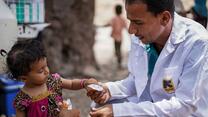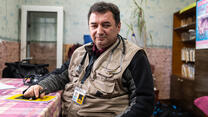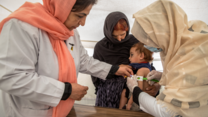
Journey with our medical team as they bring their travelling clinic to the most remote parts of Yemen.
Photos by Saleh Hayyan
After the eighth year of war, 80% of Yemenis are in need of emergency relief and humanitarian aid. The ongoing conflict has devastated the public health system, leaving many on the brink of famine and without the basic healthcare they need.
The situation is even worse in remote mountainous areas where inaccessible roads and rocketing fuel costs make it difficult for villagers to reach medical services.
That’s where the Car of Hope comes in. Taking on dangerous routes, this vehicle brings a team of skilled medics and supplies to hard-to-reach areas that have no other access to healthcare.
Here’s how a day looks for the team behind the wheel.
07:00 – The team prepares for the day ahead
The mobile health team meets early in the morning at the health centre to get ready for the journey.
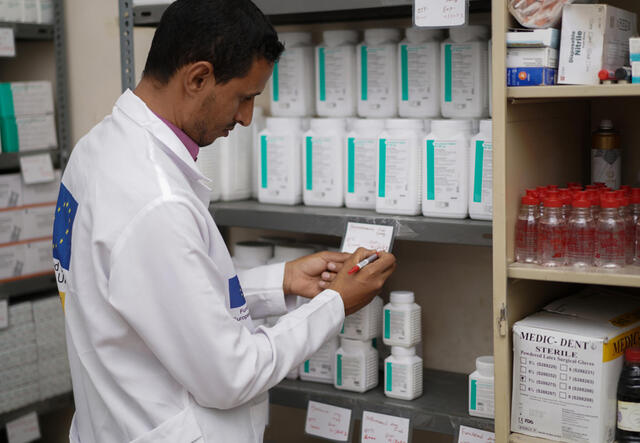
Dr. Mohsen Fadhel leads the team, which is made up of several skilled medical professionals, including:
- A vaccinator
- A pharmacist
- A midwife
- A nutritionist
- A community health advisor
Not only do Dr. Fadhel and his team have to fit in the Car of Hope, but they have plenty of supplies to bring along, too. Each morning, the team’s pharmacist Abdulbari Nasr decides which medicine he’s going to take with him.
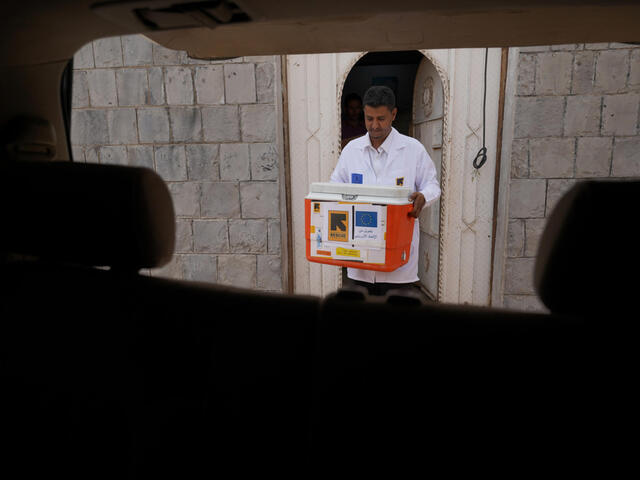
The mobile health centre is filled with medicine, emergency nutrition packs, syringes, vaccines, and bandages – all the crucial tools the team needs to treat patients on the go.
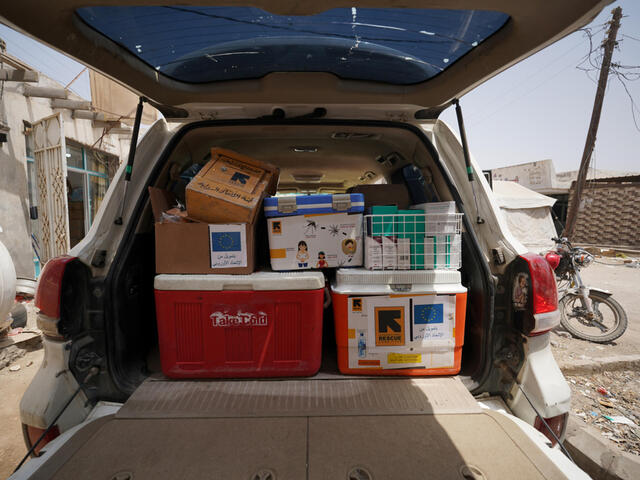
Each day is different and the team never knows what they might need when they set off. The car is packed to the brim with supplies so they’re prepared for any eventuality.
08:00 – Driving to Namra
Today, the team’s destination is Namra, a remote village in the mountainous region of Lahj a three-hour drive away.

The landscape is difficult, with no roads for normal cars to travel on and rocks littered across the path. As a four-wheel drive, the Car of Hope is designed to handle these tough terrains. It’s one of the only vehicles that can make it to the cut-off villages, which is why it’s such a lifeline to the people it serves.
10:30 – An unscheduled stop
At 10:30, the van is flagged down by a family living in a rural area. The team makes a quick stop for an impromptu consultation with two women who have been feeling unwell.
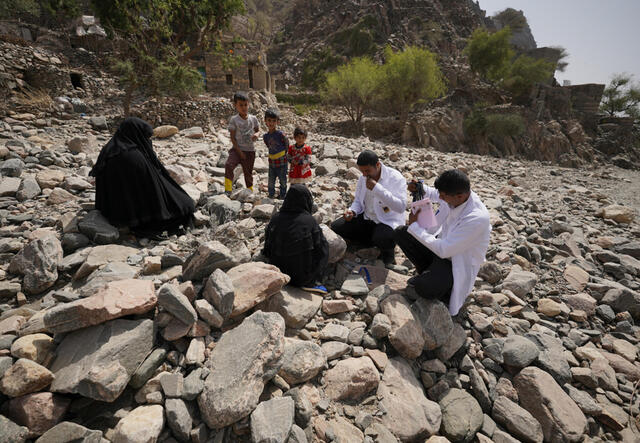
The Car of Hope drives these same difficult routes every day and so it’s easily recognised by the people who live along the way.
The first woman is diagnosed with a chest infection, the other with hypertension. Thankfully, the team has all the supplies they need to diagnose and treat the women then and there, before heading out on the road again.
11:00 – Treating patients in Namra
When the team arrives in Namra, patients line up to receive consultations with the IRC doctor and other specialists.

Dr. Fadhel then spends time assessing and diagnosing each patient. He works closely with pharmacist Abdulbari Nasr who provides patients with the medicines they need straight away from the van’s supplies.
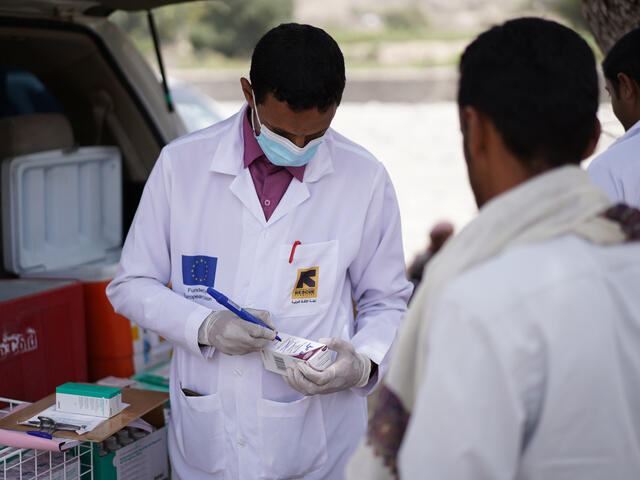
Today, 40-year-old Faisal Ahmed has brought his daughter Fatimah for a check-up. Many parents bring their children to the team to be assessed for diseases or illnesses.
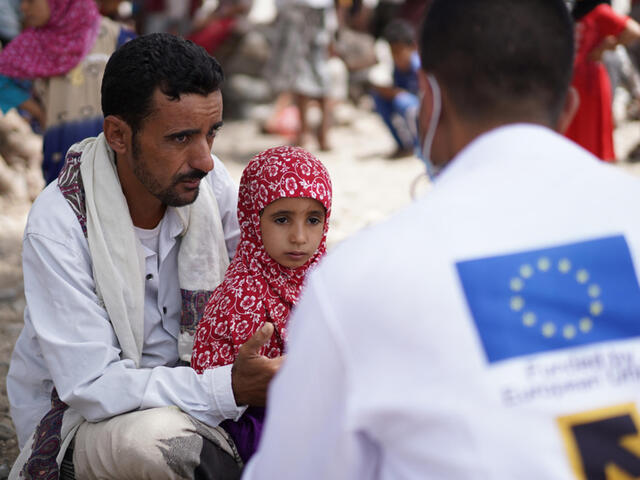
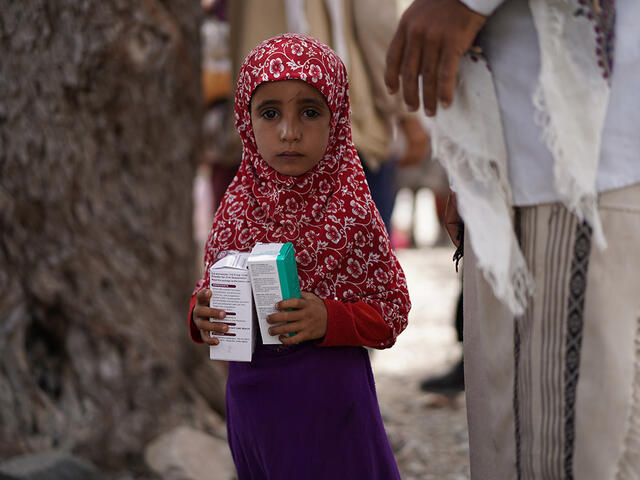
Each child is also checked for malnutrition. This crucial service is provided by Faris Ali – IRC’s nutritionist. Due to spikes in food prices and widespread poverty, Yemen currently ranks as one of the world’s worst places for malnutrition, and it’s very common in children.
At each check-up, Faris screens the child for symptoms of severe or moderate malnutrition. This intervention is crucial for young children like Hana’a, who are given nutrition packs if their weight is too low.
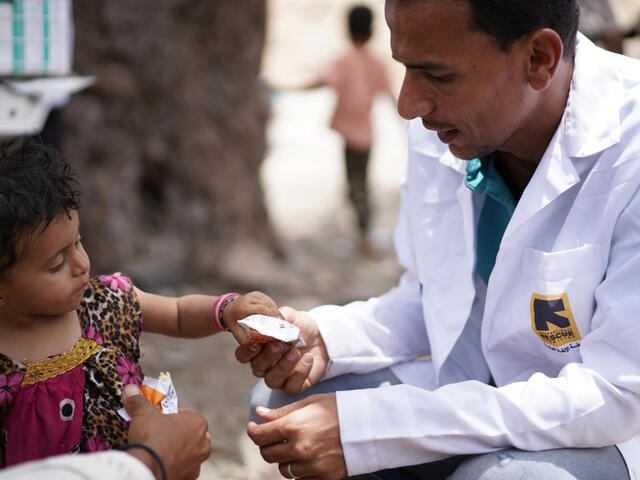
This treatment is so common that the local children have nicknamed the van “PlumpyCar” as a nod to the peanut-based Plumpy’nut that’s given to treat malnutrition.
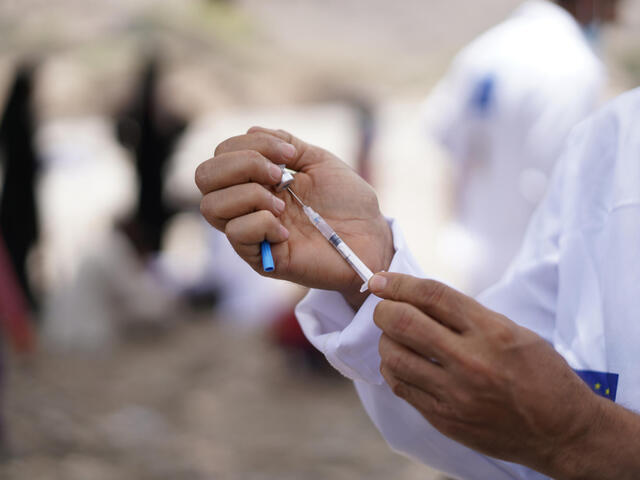
Not only does the mobile clinic bring medicine and emergency nutrition to the village, but it also brings vital vaccinations. The team’s vaccinator, Mushir Qassem, ensures that children are treated for a range of preventable illnesses.
15:00-18:00 – Returning to the medical centre
After a satisfying day’s work treating patients, the team packs up the van and begins the three-hour journey back to the medical centre.
Dr. Fadhel has led the team for five years and comes from a remote mountain village himself. “I’m happy to serve all these people,” he says, “because I know how valuable the services we provide to them are – that’s why I’m actively doing my work with happiness to this day.”
It’s a long, dangerous commute, but the Car of Hope never stops and the team will be back on the road the following day.
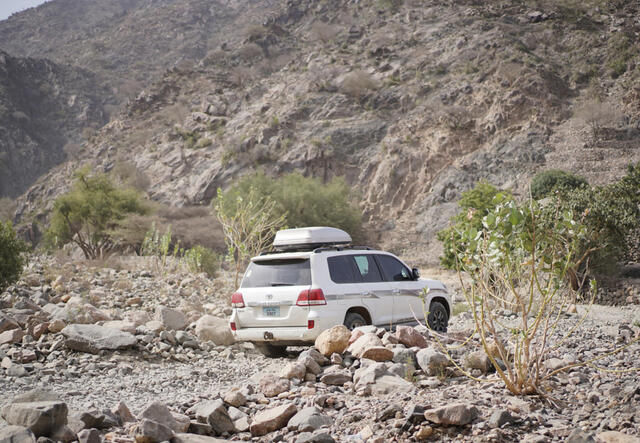
Can you help keep the Car of Hope running?
The IRC’s mobile medical clinics deliver lifesaving care to families in some of the hardest-to-reach places in Yemen, protecting precious milestones for children and their parents. Will you help us keep a van fully stocked and on the road serving families for two months?
What’s more, if you contribute today, your gift will be tripled – matched once by the UK government, and once by a private IRC donor. This means your generosity will go three times as far in helping families in Yemen.
This publication was produced with the financial support of the European Union. Its contents are the sole responsibility of the IRC and do not necessarily reflect the views of the European Union.
